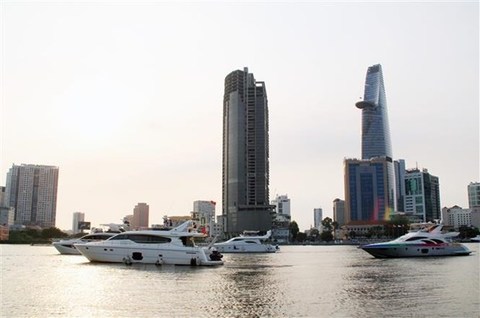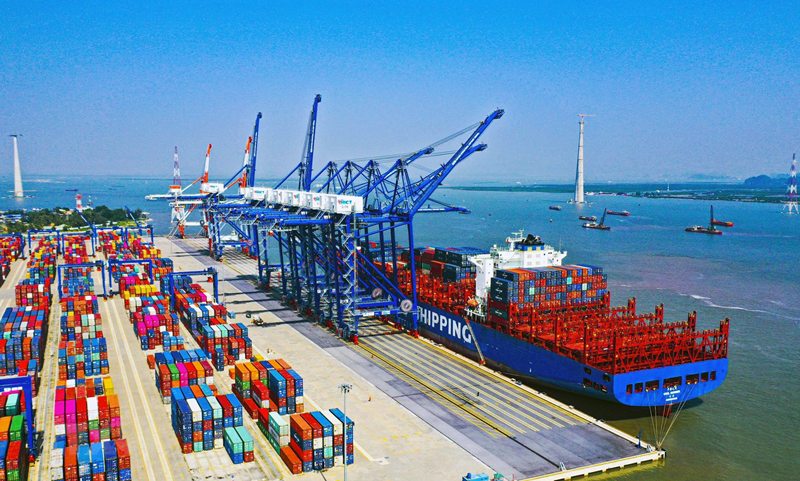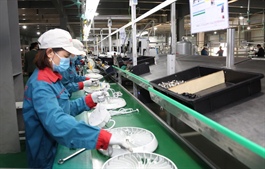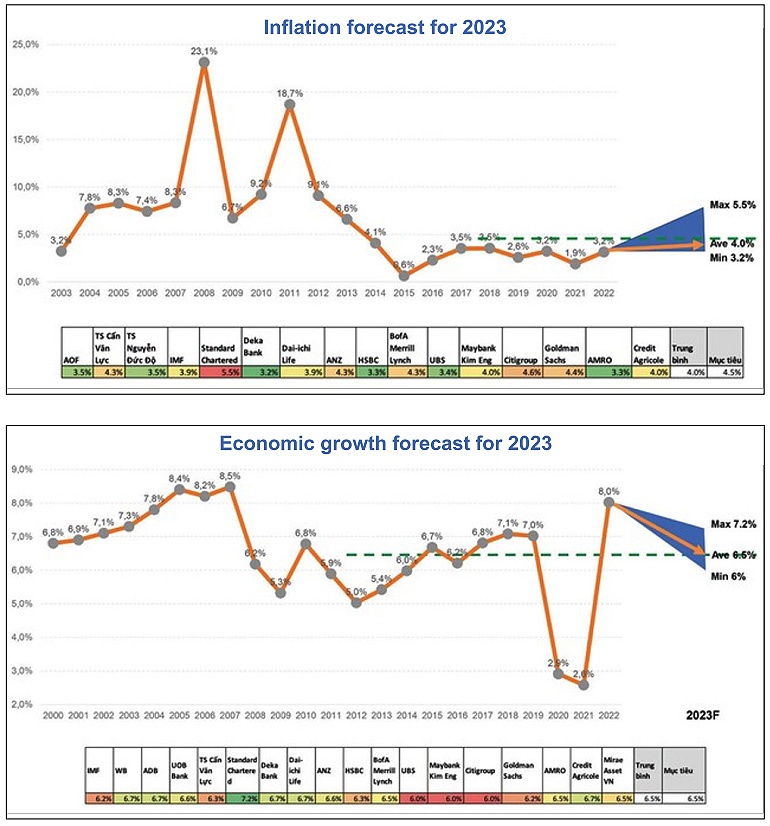Enhancing trade with the Americas
Enhancing trade with the Americas
Although trade relations between Vietnam and countries in the Americas have seen positive developments in recent years, increasing the application of trade remedies in Vietnam's major export markets is still proving difficult.
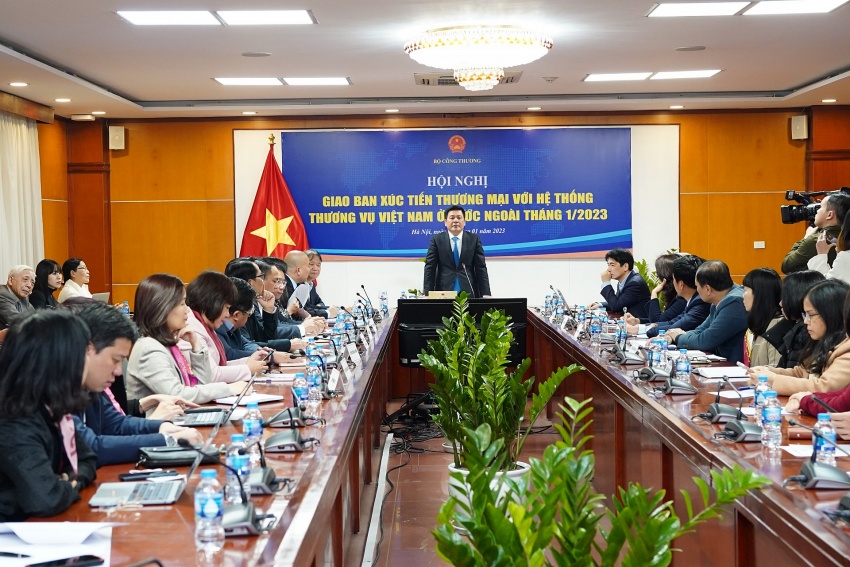
At a conference with Vietnam’s trade offices abroad organised by the Ministry of Industry and Trade on January 31, Tran Thu Quynh, commercial counsellor of Vietnam’s trade office in Canada, pointed out many favourable factors for the two countries to explore the potential for market development.
Canada is a G7 country with an average growth rate of about 1.6 per cent over the past decade, the second highest in the G7, and has a GDP per capita of around $56,000, which is in the top 10 in the world.
"Canada is also a high-consumption country, with a high import growth rate averaging around 5 per cent in 2016-2021, and up to 17.5 per cent in 2022,” said Quynh.
The government and businesses of Canada are well aware of the necessity to shift production and supply in the context of the US-China trade dispute not yet cooling, along with other factors, Quynh added. "Canada is pouring huge public investment to improve domestic transport infrastructure, with about $100 billion in 2017-2027 to upgrade seaport infrastructure, and help reduce costs and transit time between the two sides of the Pacific Ocean."
Quynh added that with the competitive advantage due to the preferential tax in the Comprehensive and Progressive Agreement for Trans-Pacific Partnership (CPTPP), Canadian businesses are increasingly interested in Vietnam's products and production capacity. In the eyes of foreign investors, Vietnam is emerging strongly thanks to its stability, predictability, and affordable prices.
In 2022, the trade surplus between Vietnam and the Americas as a whole reached $100 billion for the first time. Despite the complicated fluctuations of the global economy, import and export turnover between Vietnam and partners in the Americas last year witnessed positive growth, reaching $153.9 billion, up 10.7 per cent in 2021. Vietnam's exports reached $128.2 billion, up 12.4 per cent on-year; and imports touched $25.7 billion, up 3 per cent.
Trade with almost major partners in the area saw growth, such as the United States up 11 per cent on-year, Brazil at 6.6 per cent, Canada at 16.5 per cent, Mexico at 7.1 per cent, Chile at 9 per cent, and Argentina at 8.3 per cent.
Thanks to the positive effects of the CPTPP and Vietnam-Chile Free Trade Agreement, the import-export turnover between Vietnam and Canada, Mexico, Chile, and Peru in 2022 reached $15.2 billion, an increase of 10.9 per cent in 2021. Vietnam's exports to this group of countries reached $13.1 billion, up 8.7 per cent, while imports reached $2.1 billion, up 26.9 per cent. Trade promotion activities contributed significantly to the aforementioned positive trade results.
Identifying obstacles
Nevertheless, according to the representatives of Vietnam’s trade offices abroad, the road ahead to build on these figures is still taxing.
As of December, the US, Vietnam's largest export market, initiated 52 trade cases against Vietnamese goods, aiming to prevent dumping, tax evasion, subsidy, origin fraud, and illegal transhipment. The types of investigated products are diversified, ranging from agro-forestry-fishery products to industrial products.
Luu Van Khang, commercial counsellor of Vietnam’s trade office in Mexico, said that trade turnover between Vietnam and Mexico had grown positively recently, reaching 6.12 per cent and 37.5 per cent in 2020 and 2021 respectively. However, trade growth between the two countries had signs of slowing, with an increase of 7.1 per cent in 2022.
“In July last year, Mexico published a journal on the initiation of an anti-dumping investigation against cold-rolled steel products imported from Vietnam. One of the reasons why Mexico applied technical measures on products imported from Vietnam is that the trade balance is towards Vietnam,” Khang said.
Geographical distance and changing consumer tastes are also mentioned as issues by Vietnam’s trade offices abroad.
Quynh from Vietnam's Canadian trade office said that the large geographical area and scattered living population meant the cost of imported goods on shelves in Canada was more expensive than in other G7 countries. Also, due to changing consumer tastes, the product life cycle in the Canadian retail chain tends to be shorter than elsewhere.
Many Vietnamese products, including those of large brands, are removed from the market after a period of time. If Vietnam’s businesses only export to one province, or one state of Canada instead of the whole country to reduce the cost of market entry, businesses will have minimal market size.
“As a country with high economic openness, Canada pursues a policy of keeping a low exchange rate against the US dollar to encourage exports," Quynh said. "Meanwhile, Vietnam’s export prices are mainly quoted in USD, which is disadvantageous. Canada is a participant in many bilateral and multilateral free trade agreements, so Vietnam’s exporters there face fierce competition.”
Economic relations between Vietnam and the Americas have constantly developed in recent years
Maintaining exports
Khang from the Mexican trade office explained that processed seafood, and agricultural products, especially Vietnamese coffee, had the potential to be exported to Mexico. However, businesses need to research and create products that suited the taste of local people.
In terms of electronics, which are the main Vietnamese items being exported to Mexico, Khang said the two sides needed to cooperate in research, thereby participating in the global supply chain by prioritising the purchase of components that were the strength of each side and avoiding competition.
"Mexico is the seventh-largest automobile producer in the world, and one of the goals set by Vietnam’s trade office in Mexico is to coordinate with other Vietnam trade offices in North America to organise Vietnam delegations in the auto sector to the US, Canada, and Mexico," Khang added.
Another important market area, the Mercosur bloc which includes Brazil, Argentina, Uruguay, and Paraguay, recorded a two-way trade turnover with Vietnam in 2022, growing by 9.2 per cent on 2021 to reach more than $12 billion. Vietnam’s exports reached more than $3.3 billion, up 3.4 per cent, and imports reached $8.7 billion, up 11.6 per cent.
To maintain export with this common market, Ngo Xuan Ty, head of Vietnam’s trade office in Brazil and Peru, said the first solution is increasing delegation exchange activities between the leaders of the two countries, especially at the Ministry of Industry and Trade.
"It is also necessary for Vietnam to promote free trade agreement negotiations with the bloc, of which Brazil is the largest member. Research and development of the logistics market with Brazil is also key as it is the largest country in South America, and the centre of both air and sea freight in the region," Ty said.
Ty suggested that leaders from both sides consider developing a flight route between Vietnam to São Paulo, opening further trade to the South American market. "It is required for Vietnam’s trade offices abroad to connect with each other, with businesses and associations in Vietnam, as well as with foreign trade offices,” he said.
Meanwhile, emphasising the critical role of Vietnamese trade offices abroad, Deputy Minister of Industry and Trade Do Thang Hai said that trade promotion needed creativity and appropriate marketing.
“Trade promotion not only focuses on exports but also imports, as well as organising exhibitions and also creating connections to improve the capacity and competitiveness of businesses,” said Hai. "It is also important to pay attention to investment, especially in the processing industry."



